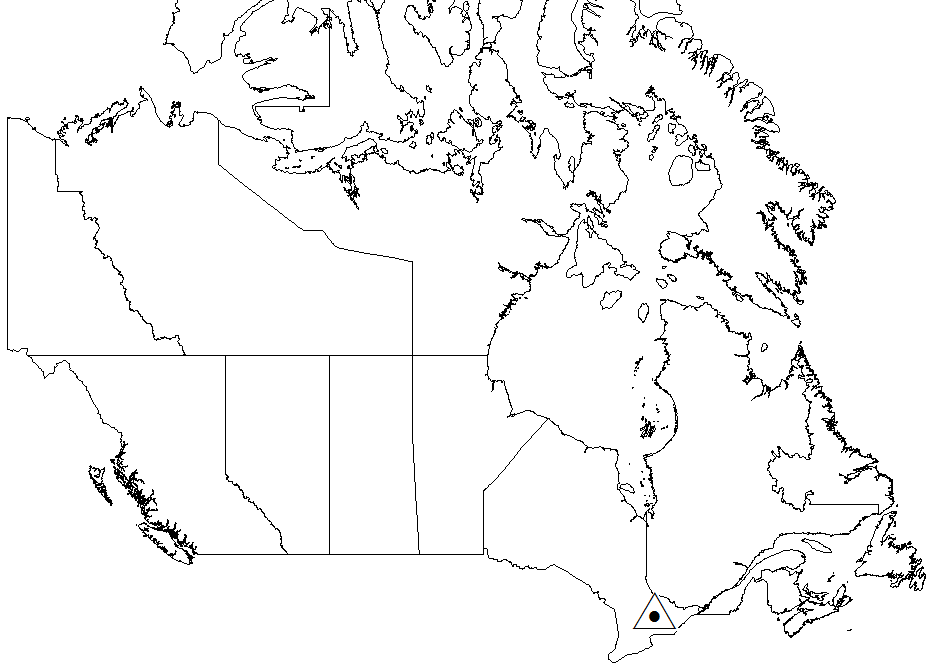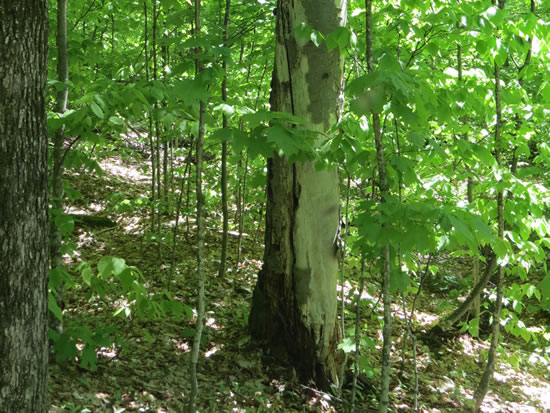Porridge Lake beech control wood ash trial

Location
Central Southeastern Ontario
Ecozone: Boreal Shield
Coordinates: 45.32° N, 78.86° W
Elevation: 420 m
Climate
1981–2010 monthly climate point estimates generated from the Natural Resources Canada climate modelling project.
Mean annual precipitation: 1108 mm
Mean minimum temperature in January: -16.9 °C
Mean maximum temperature in July: 24.6 °C
Site description
The Porridge Lake site was established in an uneven-aged shade tolerant hardwood forest that was managed using the single-tree selection system in 2015. The forest is made up of sugar maple (Acer saccharum Marsh.), yellow birch (Betula alleghaniensis Britt.) and American beech (Fagus grandifolia Ehrh.). The soils have developed in glacial till, have a sandy loam texture and are classified as Dystric Brunisols.
The experiment investigates if adding wood ash gives sugar maple a competitive advantage over beech to grow and establish. The region has had a severe infestation of beech scale (Cryptococcus fagisuga Lind.) and the fungus (Neonectria faginata) that together cause beech bark disease. Beech bark disease causes the formation of beech thickets, which result in stagnation and loss of biodiversity. Due to beech bark disease, harvesting activities at the Porridge Lake site changed from single-tree selection to removing most of the beech trees so that only one or two patches of beech remained per hectare (ha).
The experiment includes seven research blocks with eight plots per block for a total of 56, 25 x 25 m (0.0625 ha) plots, of which 42 have wood ash applications. The other 14 plots serve as controls with no ash addition.
Ash description
The wood ash used at the Porridge Lake wood ash trial site was produced from the operation of steam and water boilers used to generate heat for drying kilns at a saw mill in the region. Boiler fuels were a mixture of hardwood and softwood feedstocks. Bottom and fly wood ash were mixed as part of facility operations and were used for the experiment. The wood ash was not pre-treated prior to application.

Example of dead beech tree on a Porridge Lake wood ash trial plot.

Soil pit displaying soil horizons at the Porridge Lake wood ash trial site.
Treatment description
From July 9 to 16, 2019, wood ash was applied by hand using shovels and buckets to plots with and without chemical treatments to remove understory beech. Wood ash application rates were 0, 2.5, 5, and 7.5 Mg oven-dry ash per ha. This range in treatment application rates has been calculated as the equivalent to the lime requirement required to raise soil pH from 5 to 5.5. This range should also facilitate the development of response curves between application rates and any measured ecosystem response.
Monitoring
Monitoring the treatment effects on trees, understory vegetation, soil chemistry, soil solution, surface water chemistry and soil biodiversity is ongoing as of July 2020. Data being collected include:
- Trees
- Species
- Survival, health
- Height and diameter
- Presence/absence of beech bark disease
- Understory vegetation
- Species composition
- Height
- Percent cover
- Competition
- Presence/absence of beech bark disease
- Soil chemistry
(Ash, forest floor, and mineral soil)- Acidity (pH)
- Total carbon, nitrogen, cations, and trace elements
- Exchangeable cations
- Available phosphorus
- Nitrogen mineralization
- Soil solution chemistry
- Acidity (pH)
- Dissolved carbon
- Dissolved nutrients and trace elements
- Surface water chemistry
- Acidity (pH)
- Dissolved carbon
- Dissolved nutrients and trace elements
- Soil biodiversity
- Springtails, mites, roundworms
- Ground beetles, rove beetles, spiders, millipedes
- Microbial community composition
- Substrate-induced respiration
- Enzyme activity
- Microbial biomass
Main contacts
- Lisa Venier, Research Scientist, Natural Resources Canada, Canadian Forest Service, Great Lakes Forestry Centre
- Elaine Mallory, Forest Ecosystem Research Analyst, Ontario Ministry of Natural Resources and Forestry, Ontario Forest Research Institute
- Trevor Jones, Research Scientist, Natural Resources Canada, Canadian Wood Fibre Centre
Page details
- Date modified: